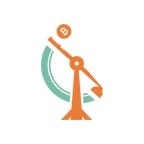With our launch of Locks, Coinapult is aiming to allow Bitcoin users the ability to transact over the Bitcoin payment network, while simultaneously maintaining price stability. Additional similar efforts are underway, looking to incorporate the stable value of national currencies and commodities to cryptographic tokens and transaction networks. We will refer to these systems as Token Asset Managers, or TAMs. At Coinapult, we see Locks as the easiest and simplest TAM implementation. While the alternative proposals vary, all have common features which can be evaluated: trust, access, and project status.
Trust
The primary issue any TAM faces is trust. Decentralized assets (cryptocurrencies) are very new, with Bitcoin providing the first example in 2009. Every cryptocurrency in existence is first issued, stored, and transmitted on decentralized ledgers.
Once issued, cryptocurrencies can then be put onto centralized ledgers by the owner. This is akin to a token manager centralizing a decentralized asset. Centralized ledgers for cryptocurrencies allow them to be sent via non-native protocols such as email and SMS.
Commodities, national currencies, and indeed every asset in existence that isn’t a cryptocurrency, are centralized by nature. They exist in a centralized vault in the physical world, or as entries in old fashioned, centralized ledgers.
To allow a centralized asset to be used on a decentralized network, a trusted manager is required to issue backed tokens which can then be transacted independently of the collateral they are backed by (which stays in the manager’s possession). In all transactions involving centralized assets, there must either be a trusted third party, or a physical hand-off between the parties.
Many TAMs claim to allow decentralized storage, transmission and exchange of commodities and national currencies. While decentralized exchange of two cryptocurrencies is possible, these claims should be treated skeptically when they involve centralized assets like commodities and national currencies. In every such case, it turns out that there is a token issuer and manager somewhere in the supply (and trust) chain.
With Locks, Coinapult is the trusted TAM, holding collateral equal to or greater than the value of each outstanding Lock. When a user creates a new Lock, tying their bitcoin to another asset, Coinapult sells an equivalent amount of bitcoin and buys the other asset. Upon receiving a command to Unlock, Coinapult reverses the process, selling the collateral and purchasing bitcoins to give the user immediate access to. In this way, no parties are exposed to exchange rate risk, as all positions are 100% backed.
Access and Network Effect
The goal of any transaction network is to facilitate exchange of tokens between users. A token that has value on paper but is only accepted by 2 parties in the world has very little practical use and is fragile. Only two possible transaction paths exist. If one of those two parties decides to drop support, the token becomes useless and therefore valueless. Conversely, a token which uses a more established network has more use cases and systemic stability.
There are three types of TAM networks: off-chain, alt-chain, and contractual.
Of these, off-chain is the most flexible, as it allows integration with other networks and blockchains. Locks is an example of an off-chain TAM that is spendable on the popular Bitcoin transaction network. In practice, this means that there are already roughly 5.3 million people and tens of thousands of businesses who can send and receive to Locks.
Alt-chain TAM networks are building new transaction networks which all start with 0 users and grow from there. These networks must convince users and retailers to implement and use their clients, tokens and protocol, instead of more popular competitors like Bitcoin. What’s more, many of these systems suffer from a lack of network security in the form of mining pool participation. This may leave them vulnerable to attacks similar to the 51% attack method on the Bitcoin network.
Contractual TAM networks are similar to alt-chain networks in terms of support. Integrating contractual TAMs requires special software, and new tokens. The advantage contractual TAMs have over alt-chains is that they can be built on top of the Bitcoin blockchain, thereby taking advantage of Bitcoin’s operational stability and mining community. Note that some contractual TAM networks choose to function on their own blockchains for a variety of reasons, and these must design, implement, and build trust in their own network security models.
Project Status
Finally, and simply, many TAM projects are still in early stages. Only a few have been brought to market, of which Locks enjoys the widest support. While many commodity backed alt-chains have been proposed, to date none have materialized. Contractual networks are further ahead, with a few known and working implementations. Today, however, most of these lack token issuers, managers, and users. The most popular contractual TAM is Ripple, which has managed to establish a few USD and EUR nodes, but hasn’t gained widespread adoption.
Conclusion
Blockchain and decentralized consensus technology are evolving very rapidly, but are theoretically incapable of eliminating counter-party risk for centralized assets like gold, silver, US dollars, Euros and British pounds. Coinapult’s Locks service offers these capabilities to anyone using the Bitcoin network. Coinapult could make a Lock colored coin, Mastercoin or act as a TAM for any of the alternative protocols, but that would require our users to transact on smaller and less connected networks, isolating them from the larger Bitcoin community. We will continue to watch this space for new advancements that could provide a better experience for our customers.
